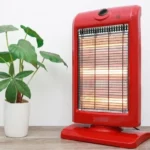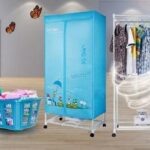Clothes Drying Cabinet
Operating Principle: The drying cabinet operates on the principle of convection to dry clothes quickly and efficiently. When electricity flows through the cabinet, the motor activates and generates heat. This heat is then circulated around the cabinet by the motor to dry the clothes.
Advantages of the Drying Cabinet
Quick Drying: Clothes are dried within 1–3 hours, thanks to its high power output ranging from 900–1500W.
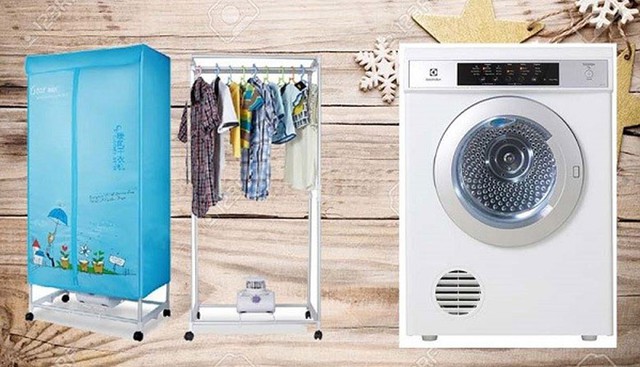
Both the drying cabinet and clothes dryer are devices that quickly and conveniently dry clothes.
Wrinkle-Free Clothes: During drying, clothes are hung on racks, and the static drying method minimizes fabric creasing, saving you ironing time.
Wide Selection: The drying cabinet comes in various models and brands, allowing users to choose according to their needs and preferences.
Effective Bacteria Elimination and Odor Removal: Equipped with UV lights, the cabinet effectively kills bacteria, prevents unpleasant odors, and keeps clothes smelling fresh.
Large Capacity: The cabinet can dry a large volume of clothes, from 10–20 kg, in a single cycle.
High Flexibility: With its compact design, the cabinet is easy to disassemble, install, store, and move, making it incredibly convenient.
Affordable: Priced between 1–3 million VND, the drying cabinet is budget-friendly for many users.
Versatile: Besides drying clothes, the cabinet can also be used as a regular clothes rack.
Disadvantages
Loud Noise: The device produces significant noise during operation, which can disrupt household activities.
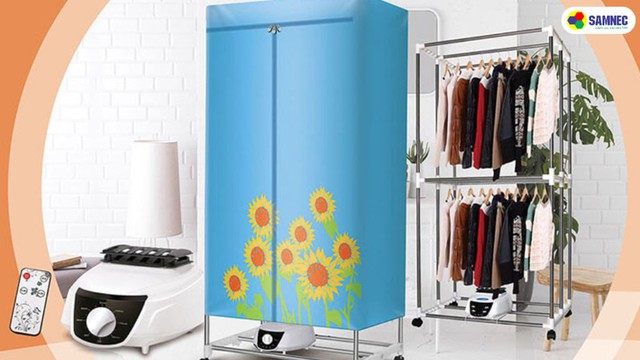
The clothes drying cabinet is designed as a standard fabric wardrobe or a cylindrical cabinet with a built-in motor to dry clothes.
Limited Functions: Due to its low cost, the cabinet has limited drying functions, offering only basic drying without specialized modes for different fabric types.
Lower Durability and Longer Drying Time: Compared to clothes dryers, the cabinet has lower durability and takes longer to dry clothes.
Time-Consuming Preparation: Clothes must be thoroughly wrung out after washing before being hung to dry, requiring additional time and effort.
Clothes Dryer
The clothes dryer is a specialized device for drying clothes, designed similarly to front-loading washing machines. Currently, there are three popular drying technologies on the market: vented drying, condenser drying, and heat pump drying.
Operating Principle: The dryer primarily works by blowing hot air into the drum to dry clothes. However, each type of dryer has a different operating principle:
Vented Dryer: Uses a heating element to warm the air, and a fan blows the hot air through the drum, evaporating moisture from the clothes. The humid air is then expelled outside through a vent.
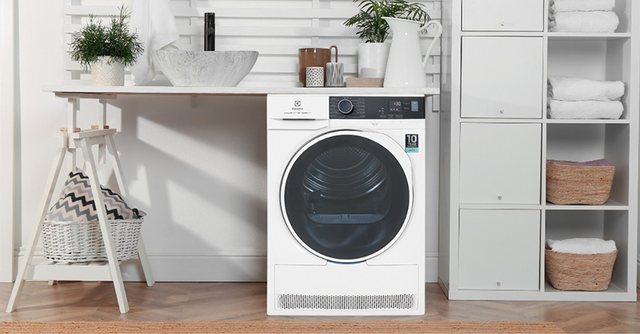
The clothes dryer is a specialized device for drying clothes, designed similarly to front-loading washing machines.
Condenser Dryer: Retains moisture during drying, which condenses and collects in a water tank below.
Heat Pump Dryer: Uses gas to generate hot air and remove moisture from clothes, converting it into warm, humid air that is cooled within the drum. The condensed moisture is collected, and the warm air circulates continuously in the drum.
Advantages: Modern and Stylish Design: Enhances the aesthetic appeal of your home interior. Ultra-Fast Drying: Dries clothes in 15 minutes to 1 hour, saving time.
Advanced Technology and Features: Protects fabric, saves energy, and meets various needs. Additional features include low-temperature drying, allergy protection, smartphone control, and fabric-specific drying modes.
High Durability: Compared to drying cabinets, clothes dryers are more durable and less prone to minor damage.
Health Protection: Effectively removes bacteria and mold from clothes, leaving them fresh and clean. The dryer also filters out fabric dust, protecting your family’s health.
Fabric Protection: Precise drying times and moisture sensors ensure clothes are not overdried, maintaining fabric quality.
Disadvantages: High Cost. Limited Flexibility: The dryer is heavy and bulky, making it difficult to move or store in small spaces.
Should You Choose a Drying Cabinet or a Clothes Dryer?
When to Choose a Drying Cabinet?
You want to save costs, or your current budget is limited. The drying cabinet is an affordable option for drying clothes.
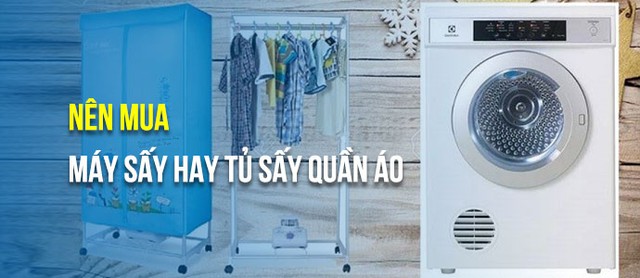
Depending on your family’s needs and budget, you should choose between a drying cabinet and a clothes dryer.
You frequently move homes or need a portable drying solution. The drying cabinet’s compact and lightweight design makes it ideal for small spaces or frequent relocation.
If you have a busy schedule and want to save time on drying and ironing, the drying cabinet helps keep clothes wrinkle-free. It can also double as a regular wardrobe.
When to Choose a Clothes Dryer?
You want a durable device that minimizes damage during use. You need to dry clothes quickly and efficiently.
You want to enhance your home’s modern and elegant aesthetic. Your home has sufficient space for the dryer. You desire advanced features like timers, fabric-specific drying modes, and remote control for added convenience.
If your home has ample space, consider a dryer or a stackable model placed above the washing machine to save space. You have a generous budget.
The Do’s and Don’ts of Using a Clothes Dryer
It is important to be aware of certain practices to avoid when using a clothes dryer to ensure the longevity of both the appliance and your garments. Firstly, refrain from over-drying your clothes; this can cause damage to the fabric and unnecessary wear and tear on the machine. Additionally, ensure that you do not put dripping wet clothes into the dryer, as this can not only lead to increased energy consumption but also cause an uneven drying process, leaving your clothes damp and musty.


























